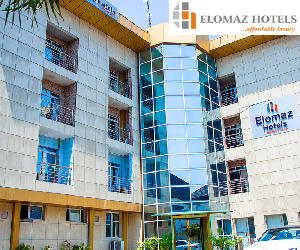Authorities have debunked the claims that houses allocated by the Lagos government under its mortgage and rent-to-own schemes are not occupied years after allocation.
It stated that some of the houses were occupied, while other joint venture schemes between private developers and the government were yet to be allocated to subscribers.
The General Manager, Lagos Home Ownership Mortgage Scheme (Lagos HOMS), Mr Bayo Forsythe, told The Guardian that Babajide Sanwo-Olu’s administration is passionate about building decent, durable homes for citizens and has been earnestly addressing the huge housing deficit in Lagos.
He said: “It is a strong misconception. For instance, one of our schemes in Wempco Road, Ogba, when you’re coming in the night, the kind of glass used, you can’t see the inside from outside, in most cases, people feel that the place is empty. But when you visit on a Saturday morning, there are no spaces to park cars.
“Like the Ibeshe scheme, we are doing about 480 units; we have prequalified over 700 applicants. There is no scheme we are short of allottees.
“In Ibeshe, people are agitating to move in, but there are processes to follow immediately after the schemes are commissioned, which includes documentation before people start moving into their homes. Some allottees adopt staggered movements into their houses.”
According to Forsythe, the agency has adopted measures to eliminate double allocation, “In every application, there is a space for passports, addresses, date of birth, which we enter into the system. It is like the Lagos Residents registration, you can’t do it twice.
“Once they type in your name, it shows the allottee. There is also an affidavit signed as a first-time buyer, and we also have other ways of verifying allottees through other government agencies and departments.”
Read Also: Kick out prostitution: Edo govt dissociate self from viral social media flier
He expressed the determination of the government to reduce the housing deficit in the state. “We saw the housing deficit of about four million and affordability was a problem, to bridge the deficit, we must build about 10,000 houses per month and about 120,000 homes per year, which is a difficult one.
“In bridging it, the government has to look at a way in which people will be able to get into the property ladder as it is done globally. That is why we brought in an installment payment programme, which is called the rent-to-own scheme.
“Initially, there was a mortgage system, the mortgage is global, with a mortgage the equity contribution could be up to 50 per cent of the asking price of the property. Initially, we started with 30 per cent and we saw that those getting into the ladder are probably the high fliers within the property sector.
“We reviewed the scheme and embraced social housing, which is not for the poor but salary earners such as civil servants and artisans, medical doctors and aviation and communication experts. We reduced the equity contribution and prices of the houses. Since then, we have been able to provide homes for many people who would never believe that they will have a property,” he said.
Click on The Trumpet and follow us on our Twitter page for more:





